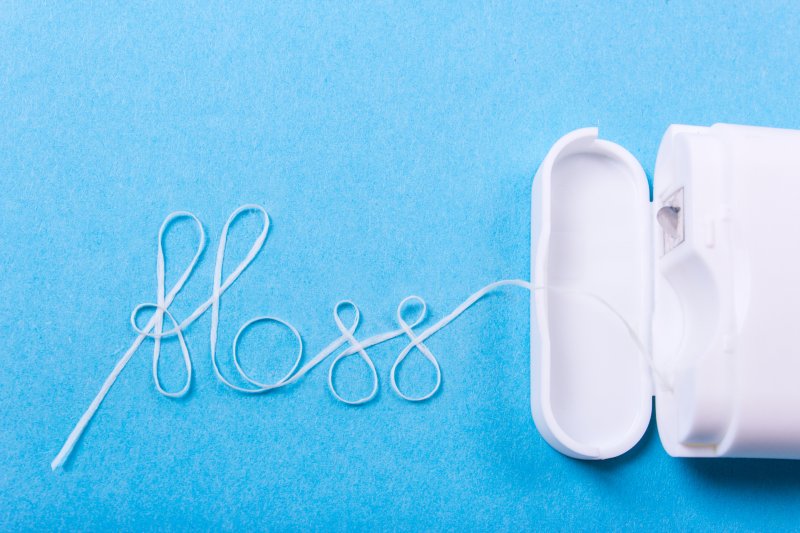
Dental implants have empowered millions of people to restore their smiles after tooth loss. These versatile titanium posts are placed directly in the jawbone where they fuse with the surrounding bone tissue through the natural process of osseointegration. This gives them the sturdy hold they need to securely anchor restorative appliances such as dental crowns, allowing them to provide superior chewing power while eliminating the risk of slipping. Here’s a guide to flossing with dental implants so you can keep them in great shape for years to come.
Why Do I Need to Floss if I Have Dental Implants?
Since dental implants are immune to tooth decay, some patients may be tempted to think that they are absolved from tending to proper oral hygiene after receiving them. The truth is that oral hygiene is every bit as important after receiving dental implants as it was before, and neglecting to clean your mouth adequately can lead to oral infections such as gum disease that can compromise implants and cause them to fail. To make matters worse, the germs that cause gum disease may sometimes lead to dangerous secondary infections like sepsis or pneumonia.
How Should I Floss with Dental Implants?
One of the many great things about dental implants is that they only require the same oral hygiene routine as real teeth, meaning a daily regimen of brushing, flossing, and rinsing with antibacterial mouthwash will effectively kill germs and eliminate plaque and food residue in the mouth.
One special consideration to keep in mind when flossing with dental implants is that they are not supported by periodontal ligaments. These cords of connective tissue are responsible for holding the natural teeth securely in their sockets, and they send sharp pain signals if you floss too deeply beneath the gumline. Since dental implants do not have these ligaments to send these signals, it’s important to be mindful of how hard you are flossing so you do not breach the delicate peri-implant seal protecting the gums from infection.
To floss when you have dental implants, cut a piece of floss about eighteen inches long and hold a few inches of it taut between your fingers. Gently slide this section between a pair of teeth (whether they are natural or artificial) and move the thread up and down and side to side against either edge. Then, carefully remove the thread between the teeth, move on to a clean section of floss, and repeat with the next pair of teeth. Continue this process until every pair in your mouth has been treated.
Dental implants boast an impressive success rate of over 95% even after ten years, making them a sound investment for your oral and overall health as long as you practice proper oral hygiene. With the right care and maintenance, your new teeth can last several decades or even a lifetime.
About the Author
Dr. Natalya Ramsay earned her dental degree at the Science University School of Dentistry and continues her education by regularly completing postdoctoral coursework. She is proud to be a member of the American Academy of Cosmetic Dentistry and the American Academy of Facial Esthetics. Her office in McMinnville offers general, restorative, cosmetic, and emergency dentistry as well as dental implant services. To learn more about caring for dental implants, contact her office online or dial (503) 472-1402.
